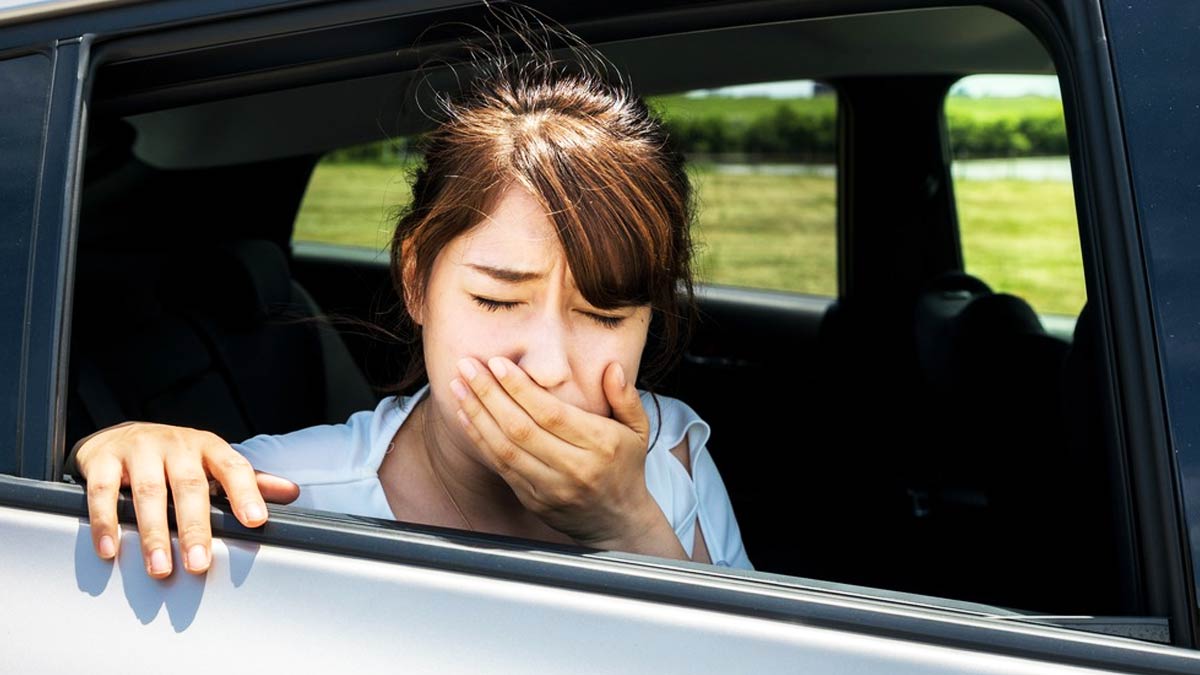
Motion sickness is a condition in which your brain is not able to process any information received from the eyes, ears and body. Different types of motion, including in a car, plane, boat, or even a ride in an amusement park can make you feel nauseous, or sick to your stomach. Some people vomit. In simpler words, feeling carsick, seasick or airsick is motion sickness. Kids are at a higher risk of motion sickness as compared to adults. More than half of children population experiences motion sickness when travelling in a car (also called carsickness). The most common type of motion sickness is experienced when travelling by a ship, with an estimate that up to 100% of travellers experience something known as seasickness. Keep reading further to know about the symptoms, causes, and treatment of motion sickness.
Table of Content:-
Motion sickness symptoms

Motion sickness can occur suddenly and take you by surprise at times. You might feel abolsutely relaxed at one moment and then suddenly experience these symptoms listed below:
- Headache
- Dizziness
- Fatigue
- Cold sweats
- Irritability
- Not able to concentrate
- Nausea and vomiting
- Rapid breathing or gupling air
Also read: Get Rid Of Motion Sickness With These Simple Home Remedies
Causes of motion sickness
Motion sickness is caused due to travel or when you are in motion. If you are sitting in a vehicle that has been moving constantly with comparitively slow and prolonged motion, the balance in your inner ear can get affected, leading to motion sickness. This condition is highly likely to happen if you are in stress about having an attack, because of the air being too stuffy or full of fumes, or if you have just eaten a lot of food. Looking at food can trigger the feeling of motion sickness and make it worse. People who are suffering from migraine may also be at a greater risk of motion sickness.
If you are suffering from motion sickness, there is a discrepancy between the motion that is expected to happen and the real motion experienced by the organ of balance in your inner ear. These unexpected signs lead to a confused message by the brain, resulting in the occurence of symptoms. Usually, motion sickness symptoms disappear as the brain gets used to the new flow of motion. Two neurotransmitters, chemicals that trasfer messages to cells in the brain, namelt acetylcholine and dopamine, play a major role in triggering motion sickness.
Motion sickness treatment
The discomforting symptoms of motion sickness mostly stop when the motion causing it stops. However, the case is not always the same. There are people who experience symptoms for even some days after the trip has ended. Listed below are some treatment options for motion sickness:
1. Looking outside the window

One common treatment method is to basically look out of the window of the moving vehicle and to focus at the horizon in the direction of the vehicle. This helps in restoring the inner balance by getting a visual confirmation of motion.
Also read: Avoid travel sickness stay balanced
2. Closing eyes
During night, or in a ship without windows, it is useful to just close your eyes, or take a short nap, if possible. This helps in dealing with the issue between your eyes and inner ear. Closing the eyes may help in relaxing and forgetting about the nauseous feeling.
3. Chewing
Chewing a chewing gum or mouth freshener might also be helpful in dealing with motion sickness. Car sickness can also be reduced by chewing a piece of ginger. While there are home remedies to tackle motion sickness, some medications are also an effective way to prevent it.
If you closely read or look at any objects, or look at your surroundings while going by such as the scenery during your trip, the motion sickness can get worse. It is best to look at objects on the horizon. There are no severe complications of motion sickness that one should worry about. However, if vomiting continues to the point where your body becomes dehydrated, then it is important to visit a physician.
Also watch this video
How we keep this article up to date:
We work with experts and keep a close eye on the latest in health and wellness. Whenever there is a new research or helpful information, we update our articles with accurate and useful advice.
Current Version